Next-Generation Waste Management
Technology has brought us the litany of conveniences that define our modern era, yet these conveniences have come with a massive waste footprint – a problem that has proven deeply challenging to manage. We’ve taken several approaches to process our immense volumes of trash: burying it in landfills, attempting to recycle old materials into new materials, “downcycling” waste into usable products (such as making park benches from shredded plastic bottles), or simply burning it. But none have truly succeeded in managing this issue on a global scale.
Scarcity Zero intends to change that. While it’s true that a goal of the framework is improving our ability to recycle things like plastics from the design stage, recycling complex polymers is inherently difficult. And when we consider the extent of waste across the globe, the problem seems daunting, no matter how sophisticated our technology becomes.
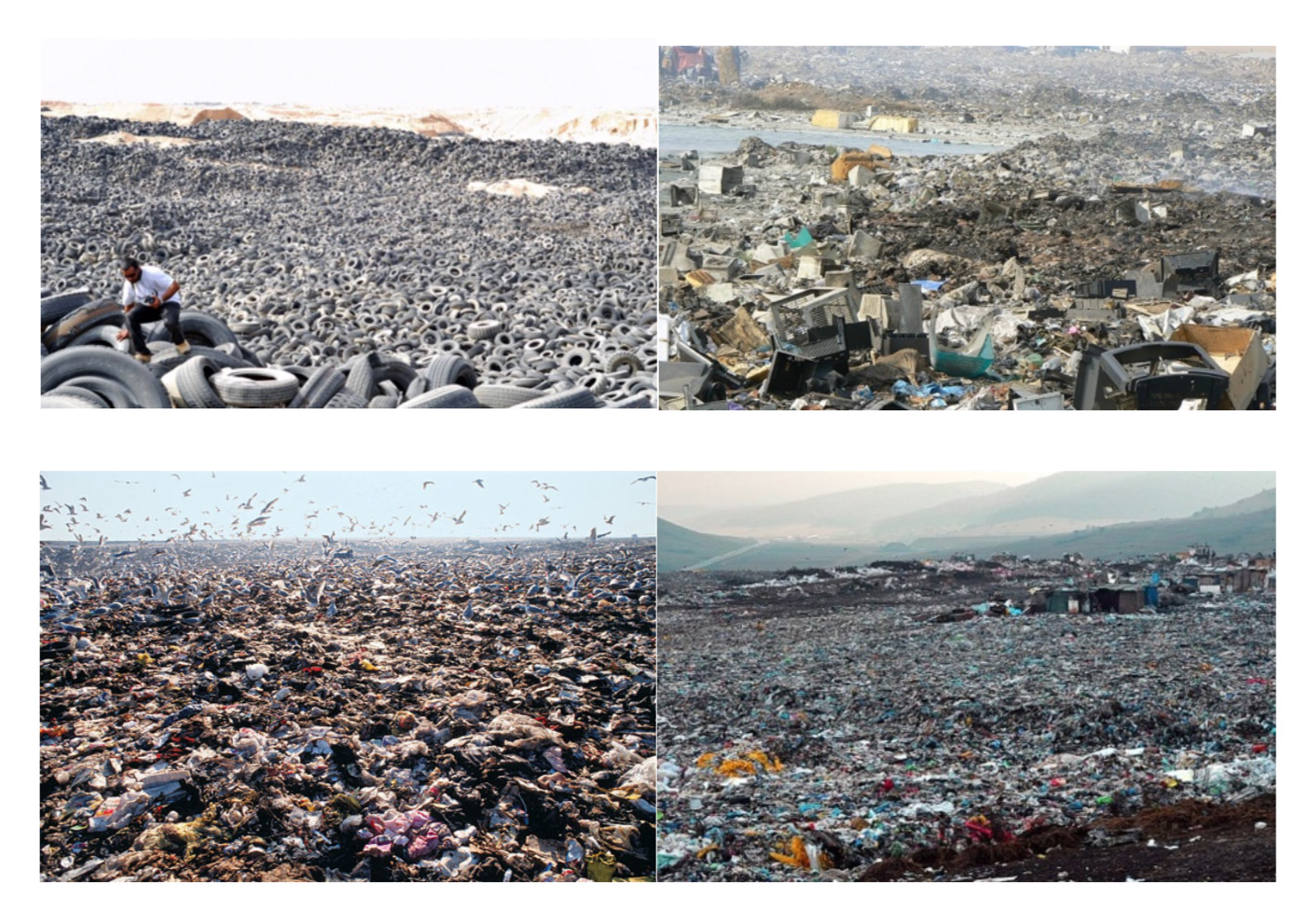
Worse, even while advances in recycling certain materials show promise, and getting rid of single-use plastic products is a laudable goal, each ultimately does little to turn the tide of our global waste accumulation.[38] The solution to this problem must be massive and immediate, effective and achievable – and all on a planetary scale. There presently aren’t many technologies that can meet these requirements, but one called plasma gasification can.[39]
In concept, the “gasification” of waste isn’t much different than incineration – simply burning it as humanity has done for millennia. But gasification uses a high-intensity electric current to create a plasma – an ultra-hot state of ionized gas – to separate trash into two separate states: the first, a material known as “syngas” that can be used as a fuel in myriad applications, as shown on an accompanying overview diagram. The second is an inert slag that can be used to make other useful materials like concrete, roads and insulation.[40]
Plasma gasification itself can also be harnessed as a potent source of energy, which can be used to both sustain its electric current and power other processes.[41] Normal incineration requires fuel and works at much lower temperatures, leaving behind harmful byproducts that present dangers to both public health and the environment. Gasification avoids these issues completely.
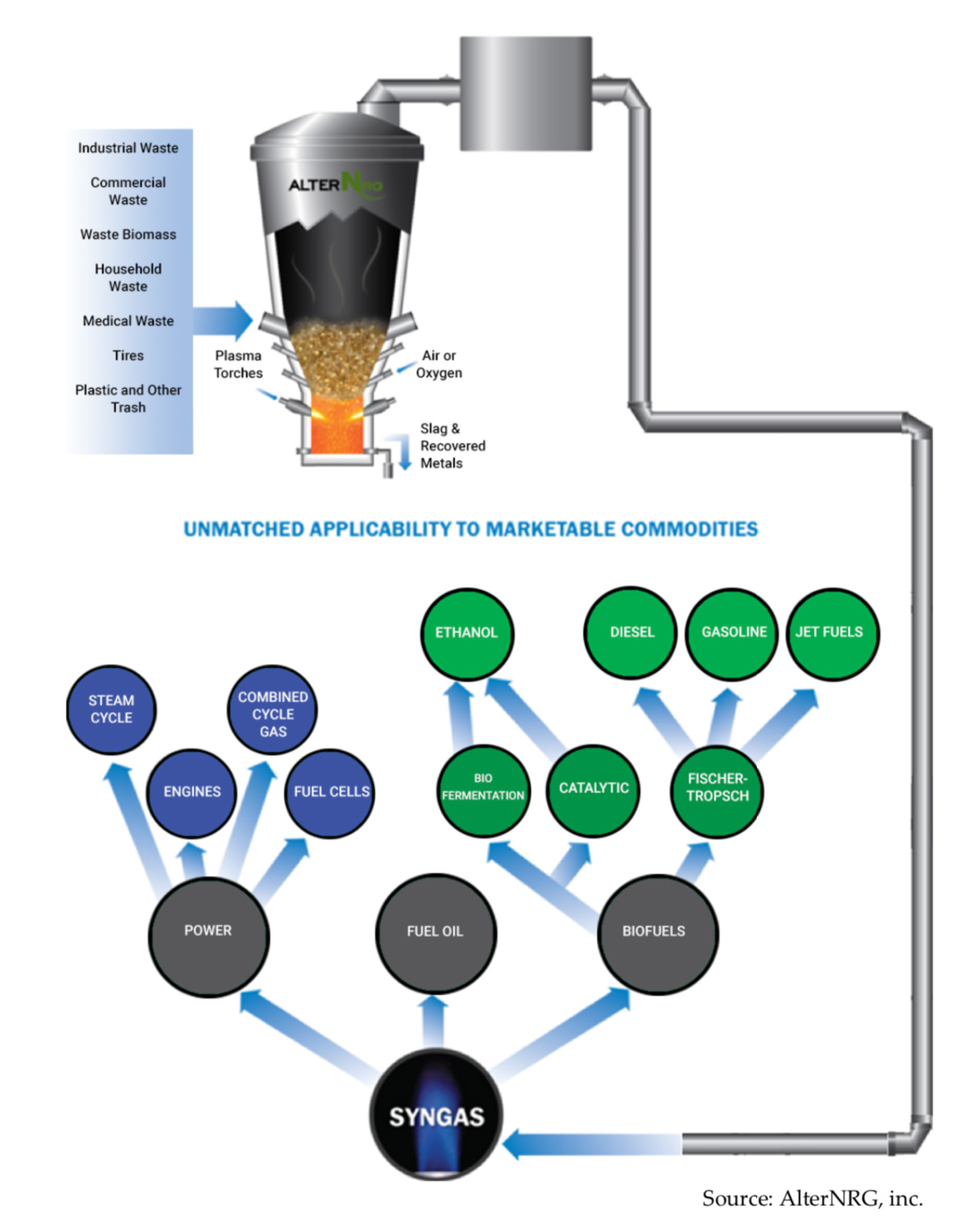
| Plasma Gasification | Incineration (burning) | |
|---|---|---|
| Temperature | High temperature, 1,400-1,600 °C | Medium heat (870-1200 °C) |
| Emissions | Does not create air pollutants | Allows toxic atmospheric pollutants to form. |
| Byproducts | ~99% of waste material becomes usable material. | ~30% of the waste material remains as toxic ash. |
| Useful Products | Syngas and an inert slag which is used in building materials and roads. | None. Incineration is among the most expensive and polluting methods of waste management. |
| Power | Generates power.[42] | Requires fuel. |
Plasma gasification is an integral part of Scarcity Zero, that when partnered with other technologies in the framework, brings sophisticated waste management to any energy-generating ensemble. This application is vital to a clean energy future that presents minimal impact to Earth’s ecology. But it can be applied further to an even more critical task: cleaning our oceans.
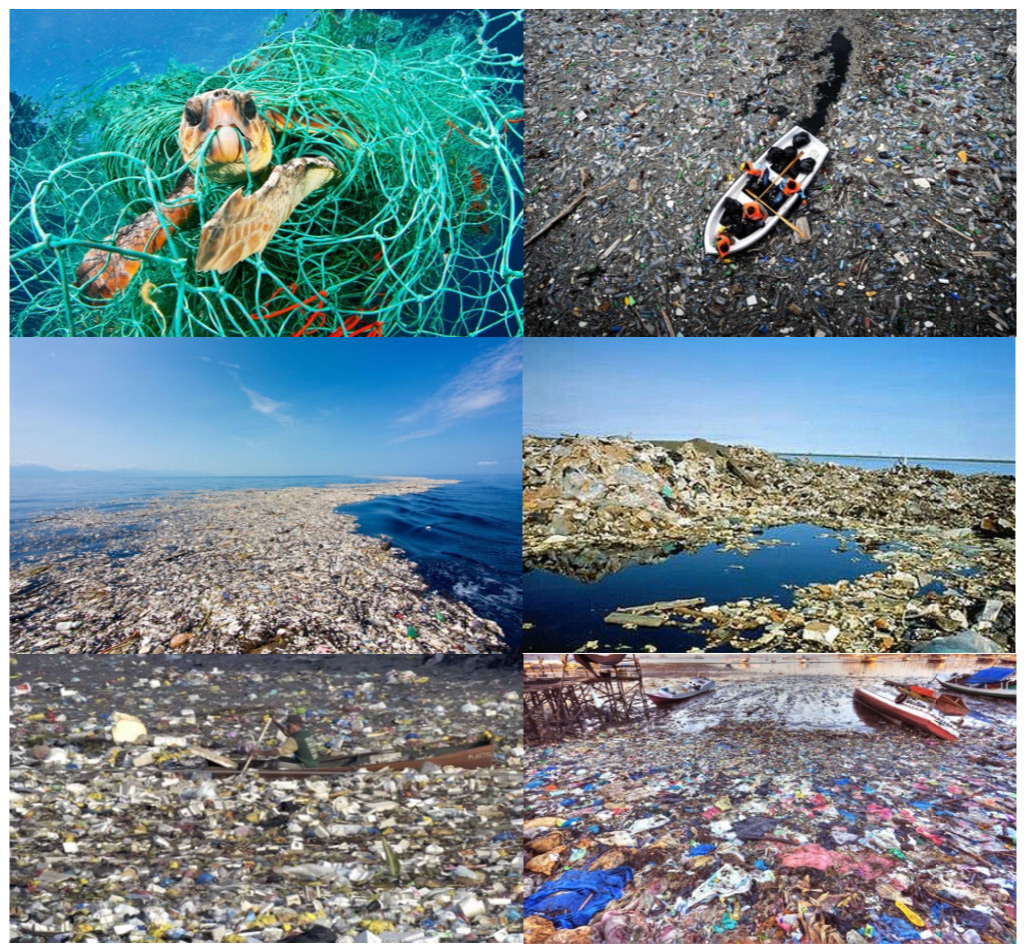
Over decades of mass extraction, global consumerism and irresponsible waste disposal, ocean trash has become a major problem on. There’s so much plastic and garbage floating in Earth’s seas today that it’s now accumulated into patches that are thousands of miles across.
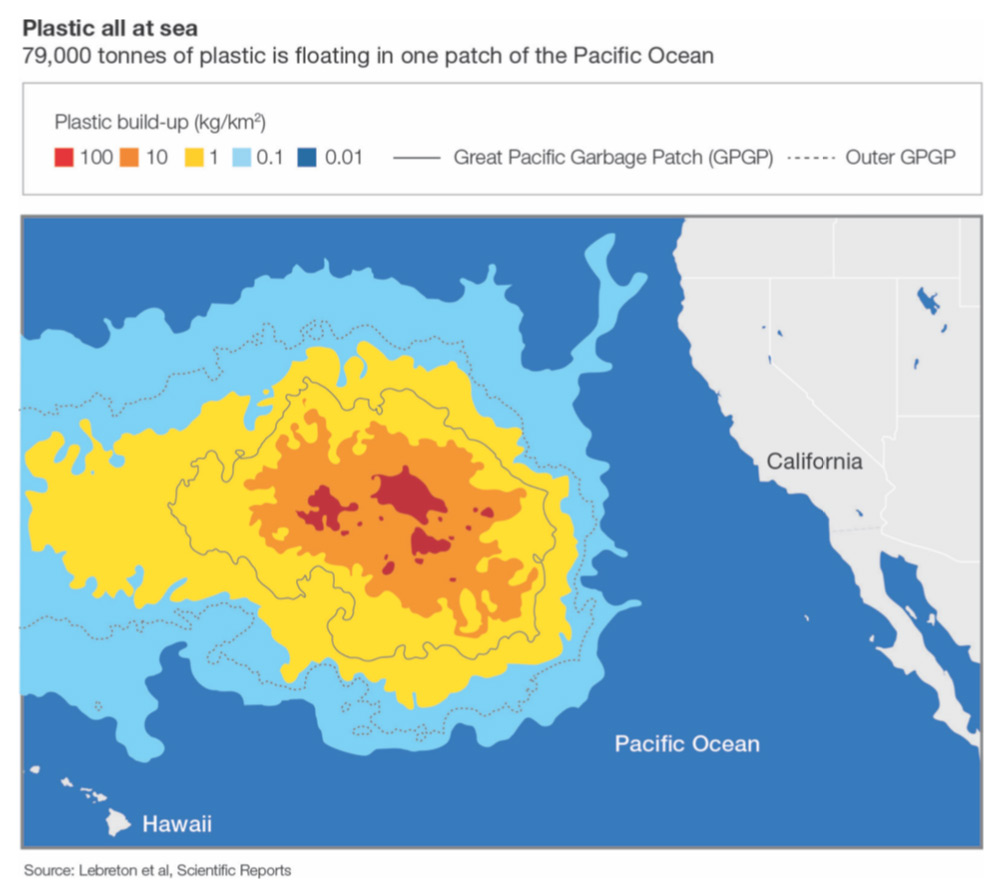
Each major ocean has a large accumulation of trash within primary ocean currents (referred to as “gyres.”)[44] The picture above outlines the “great pacific garbage patch,” one of five worldwide.
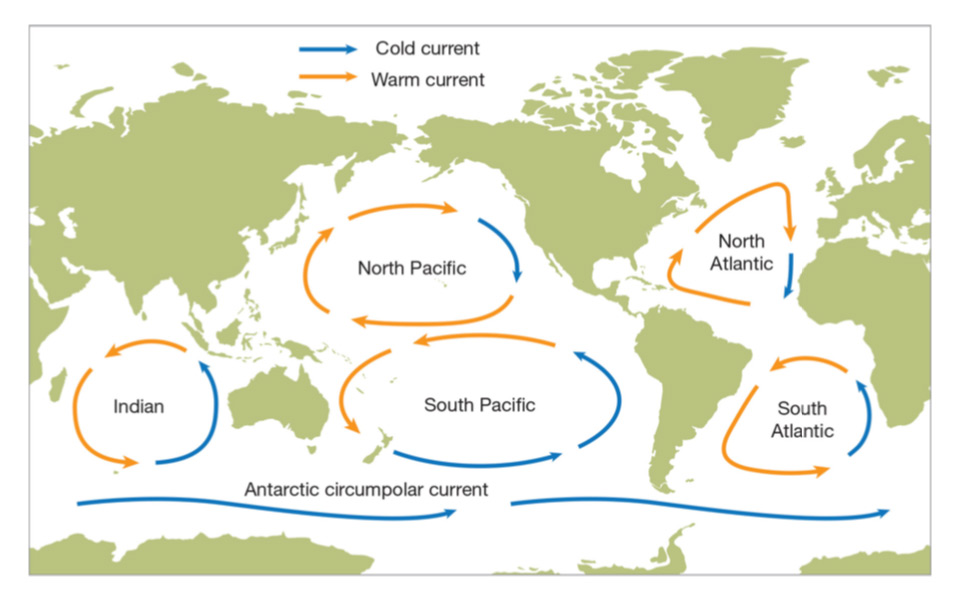
Worse, waste from these massive piles is continually decomposing into smaller pieces – and these smaller pieces are being consumed by marine life. This poisons the creatures it doesn't kill, which eventually makes its way into humans when we eat seafood. Currently, some 3.2 billion people rely on seafood for almost 20 percent of their animal protein intake.[45]
Science and society are aware of this problem and have invented promising tools to help reverse course. The Ocean Cleanup Project, for instance, recently launched a gigantic sieve consisting of floating pipes and netting that corrals trash into a U-shape for future processing.[46] In concept, several of these sieves would float with ocean currents to slowly accumulate ocean trash over time, with the hope of eventually improving marine environments.
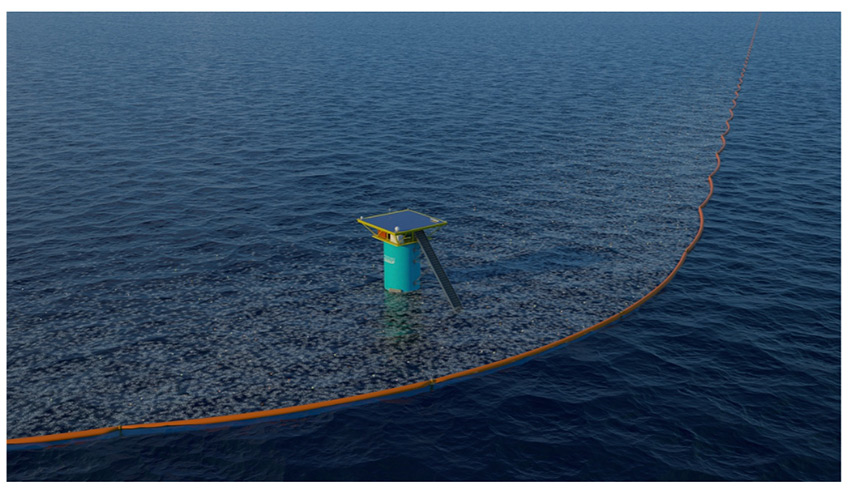
But that step of “accumulation” presents another important question. Once the trash is corralled, what do we do with it? And how does cleaning up ocean trash in one place prevent it from being reintroduced to marine environments elsewhere? Scarcity Zero’s answer to this question is called a “Trident Facility.”
A Trident Facility is built like an offshore oil rig – a large floating facility that can navigate any ocean in the world. Yet instead of drilling for oil, it would both synthetically produce resources and dispose of ocean trash cleanly and safely.
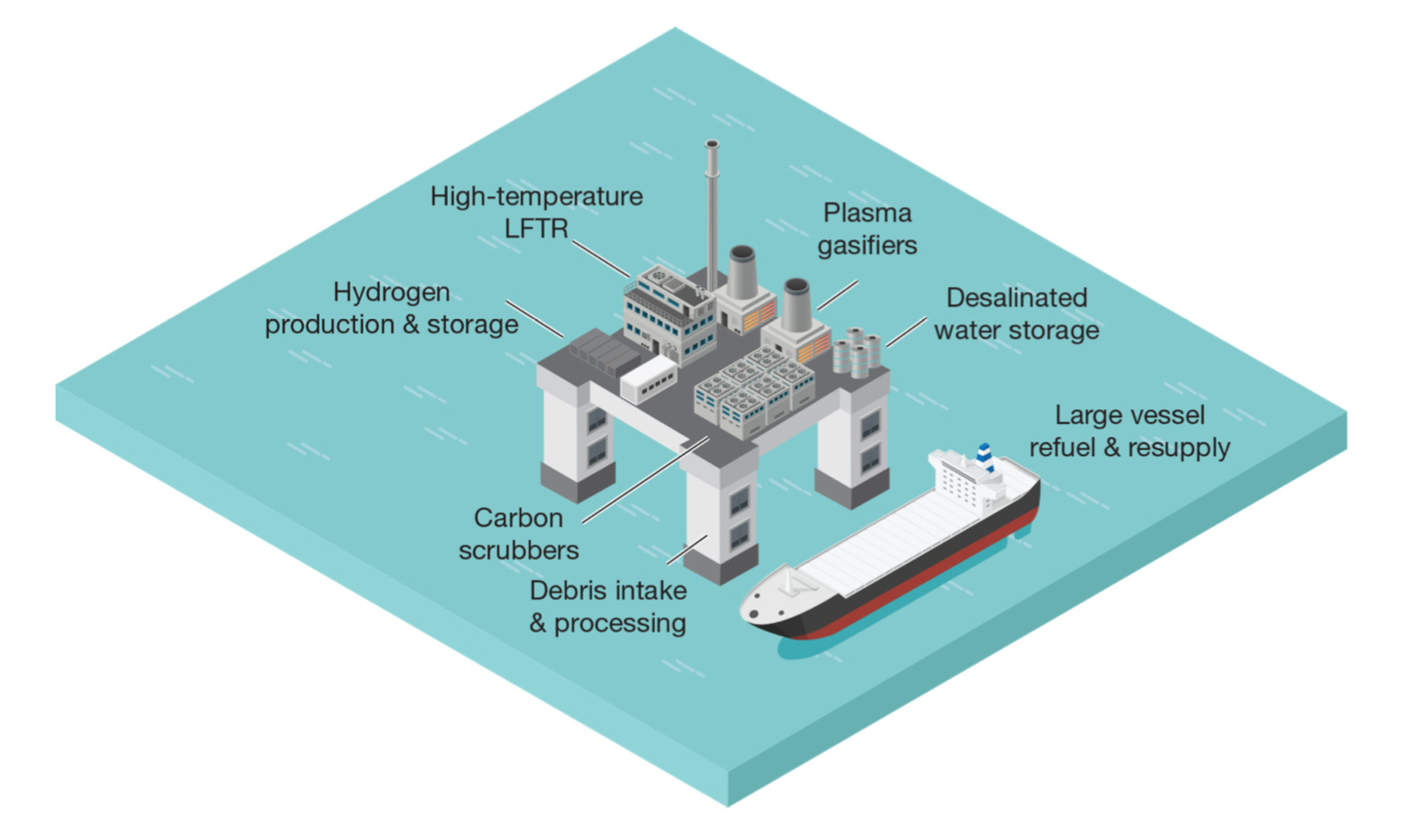
Here’s how they would work:
- The primary power source of a Trident Facility is a small LFTR, which provides the core power for the plasma gasification of ocean trash and the residual energy needed to power auxiliary, resource-producing systems.
A cooperating series of Trident Facilities would scour the oceans and suck in trash from one of their four floating legs or a central lift. Ideally, these would work in conjunction with floating trash collectors like those from the Ocean Cleanup Project. From there, trash would be processed via a plasma gasifier to become syngas or the slag that can be turned into useful materials.
- The excess energy generated from the LFTR and the plasma gasifier would be further used to extract fresh water and hydrogen fuel from seawater, just as with CHP Plants. This could be used to resupply large ships on-demand, enabling Trident Facilities to serve as de-facto ports or emergency safe havens.
- Beyond trash gasification, hydrogen production, and seawater desalination, any excess energy produced by Trident Facilities would be used to power atmospheric scrubbers to reduce air pollution and greenhouse gasses in the atmosphere.
Trident facilities earn their namesake because they perform three unique roles: ocean cleanup, resource production and atmospheric scrubbing: three points of Poseidon’s trident. They enable us to work to eradicate ocean trash, while using the byproducts to make useful materials. This helps us come ever closer to the material revolution Scarcity Zero seeks to make the new normal.